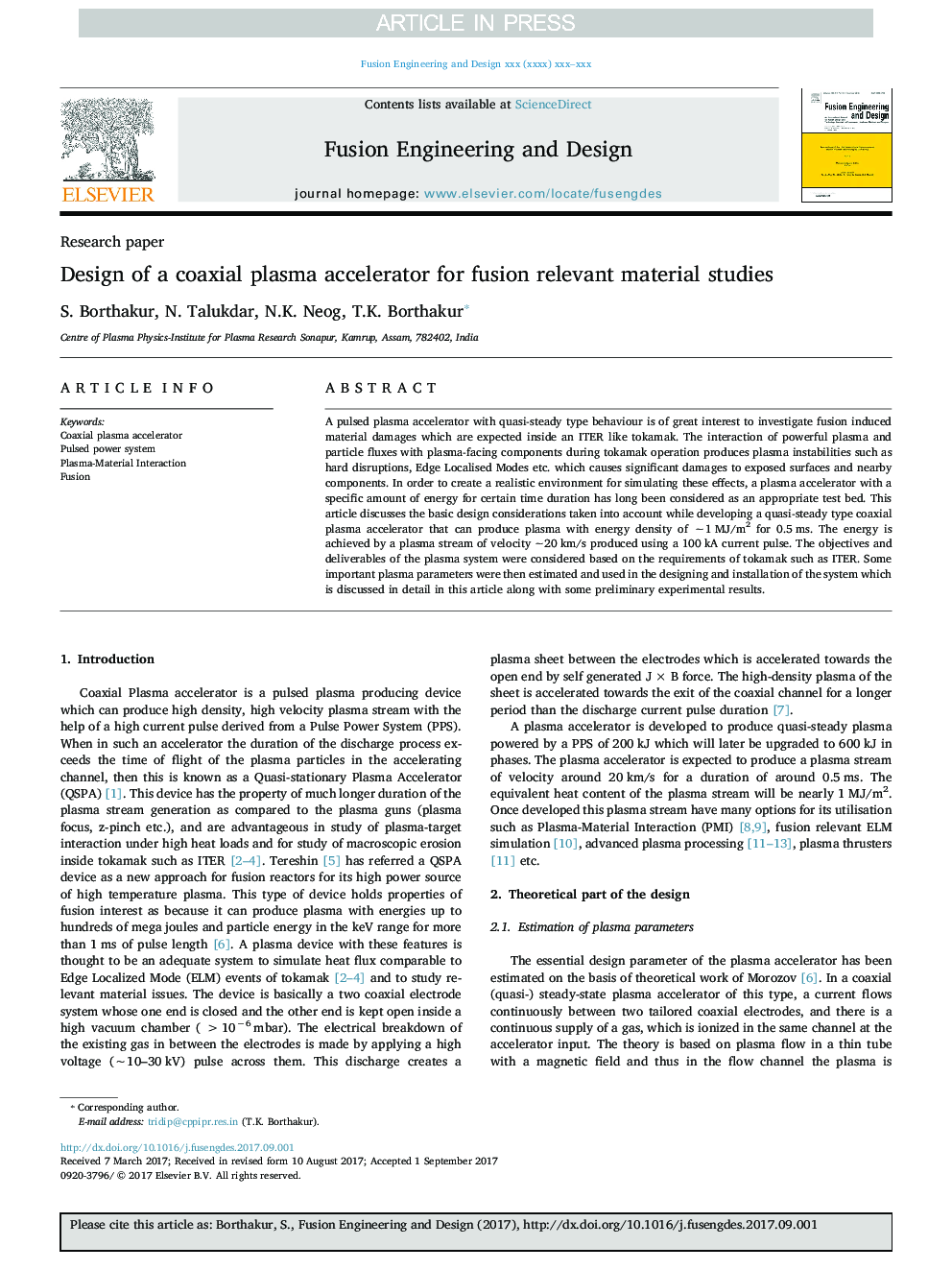| Article ID | Journal | Published Year | Pages | File Type |
|---|---|---|---|---|
| 6744613 | Fusion Engineering and Design | 2017 | 9 Pages |
Abstract
A pulsed plasma accelerator with quasi-steady type behaviour is of great interest to investigate fusion induced material damages which are expected inside an ITER like tokamak. The interaction of powerful plasma and particle fluxes with plasma-facing components during tokamak operation produces plasma instabilities such as hard disruptions, Edge Localised Modes etc. which causes significant damages to exposed surfaces and nearby components. In order to create a realistic environment for simulating these effects, a plasma accelerator with a specific amount of energy for certain time duration has long been considered as an appropriate test bed. This article discusses the basic design considerations taken into account while developing a quasi-steady type coaxial plasma accelerator that can produce plasma with energy density of â¼1Â MJ/m2 for 0.5Â ms. The energy is achieved by a plasma stream of velocityââ¼20Â km/s produced using a 100Â kA current pulse. The objectives and deliverables of the plasma system were considered based on the requirements of tokamak such as ITER. Some important plasma parameters were then estimated and used in the designing and installation of the system which is discussed in detail in this article along with some preliminary experimental results.
Keywords
Related Topics
Physical Sciences and Engineering
Energy
Energy Engineering and Power Technology
Authors
S. Borthakur, N. Talukdar, N.K. Neog, T.K. Borthakur,
